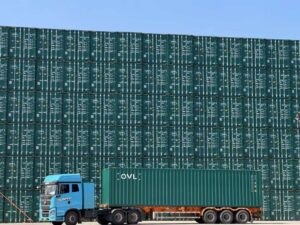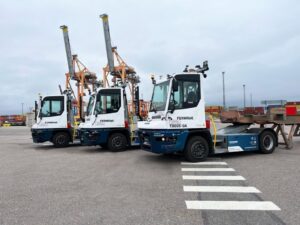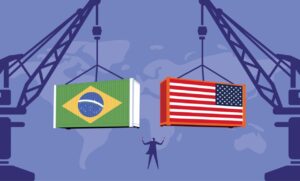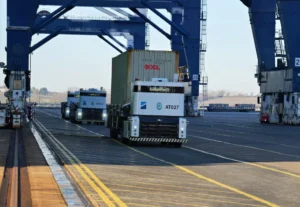A staggering 40% of ships at West Coast ports are being required to anchor before loading or unloading, as some 59 vessels wait at anchor outside the ports of Los Angeles and Long Beach.
In social media post, Lars Jensen, CEO of Vespucci Maritime, said a handful of the waiting vessels have been lying in wait for around two weeks having departed Asia in mid-August.
“Furthermore, 11 of the vessels waiting in line still appear as planned to depart ports in Asia with cargo bound for the US West Coast again within the next 2½ – 3 weeks,” Jensen added.
“Given they are still waiting in line off the California coastline, and that the queue is growing, it is clear we should expect further blank sailings out of Asia in October as these vessels are not going to be able to make it back to meet their scheduled departures.”
Jensen noted that if “extremely strong demand” were to continue on the Transpacific, carriers could elect to blank some Asia-Europe sailings and temporarily let the vessels make a voyage across the Pacific before coming back to Asia and rephasing into the Asia-Europe network.
Jump in container moves per port visit causes further congestion
The update comes as IHS Markit released its newest findings into ongoing congestion at the west coast ports.
The average number of containers requiring loading and unloading per ship call at major global gateway ports has jumped during the pandemic, causing further delay and congestion in an already stretched supply chain.
According to the latest Port Performance Data by IHS Markit, container call sizes are up between 10% and 70% (vs H1 2019) across major US, Northern European and Asian ports.
The average vessel now requires more than 3,000 container moves per single call as global trade volume bounces back.

IHS Markit’s remarks mirror that of Hapag-Lloyd CEO Rolf Habben Jansen, who noted that global average container moves (boxes per berth) had grown by 7.2% from the 1H2020 to 1H2021 for the shipping line.
At the Port of Long Beach, average call sizes are now more than 70% higher than before the pandemic with terminals dealing with an average of more than 7,000 container moves per call on large ocean-going vessels.
In Singapore and Yangshan (Shanghai), the call size increased by 27% and 23% percent respectively over the last two years.
Turloch Mooney Associate Director, Maritime and Trade at IHS Markit, commented, “The severe operational strain is caused by the surge in cargo volumes coming in much more concentrated loads.
“This spike in demand is placing heavy stress on ocean and landside operations, increasing yard congestion and cargo dwell times, with knock-on effects on equipment repositioning and intermodal links further fuelling the problem and resulting in sustained congestion at key global gateways.”







